Government is chosen to tell everybody to refrain from enjoying themselves over the holiday period in order to save the NHS, and to remind all to try to receive as many vaccines as their arms can handle - we've not had this yet this year, but I note that there's still time for our authorities to slip it in before Christmas Eve. Given the imminent collapse of the NHS, perhaps it is a good time to discuss how well the Covid vaccines have been helping to reduce infections, hospitalisations and deaths from Covid, according to the data in the UKHSA's Vaccine Surveillance Report.
It wasn't until early September 2021 that the UKHSA started to include actual vaccine surveillance data in the Vaccine Surveillance Report. I've often wondered why they started to offer these data, as even in that September report the data didn't support the 'vaccines are good' narrative. My favourite theory is that someone in authority, ignorant of the complexities of the immune system (that's the vast majority of those in authority, if not all of them), demanded that the data be included to show the population how well the vaccines were bound to be performing...
The data on infections first presented in the Vaccine Surveillance Report were troubling, showing an incidence rate of Covid in the vaccinated higher than that seen in the unvaccinated for those aged over 40.
In that first reporting of real-world incidence data by vaccination status, the UKHSA put only a small paragraph to remind readers that you mustn't simply look at the data and infer how well the vaccines are doing:
The rate of a positive COVID-19 test varies by age and vaccination status. The rate of a positive COVID-19 test is substantially lower in vaccinated individuals compared to unvaccinated individuals up to the age of 39, and in those aged greater than 80. In individuals aged 40 to 79, the rate of a positive COVID-19 test is higher in vaccinated individuals compared to unvaccinated. This is likely to be due to a variety of reasons, including differences in the population of vaccinated and unvaccinated people as well as differences in testing patterns.Of course, that final sentence is correct in that there are a multitude of reasons why raw data shouldn't be interpreted simply. However, data based on population-wide testing tends to at least offer a strong indication of what is really going on. The real-world data on incidence presented in that Vaccine Surveillance Report were highly suggestive of a problem that should have been prioritised for rigorous investigation, not explained away with the flick of a pen.
Six Vaccine Surveillance Reports later the situation had deteriorated, with rates in the vaccinated higher than in the unvaccinated for all those aged over 30, with significantly higher rates for those aged 40-60.
After a few more weeks of the apparent deterioration of the vaccines' protection, the UKHSA gave up on the helpful charts (presumably they were too easy to interpret how bad things were getting), but they were still publishing raw data in tabular form and they continued to include ever more text warning of the dangers of interpreting these data 'at face value'. By November 2021 the UKHSA had resorted to including a stern warning in bold in its section on real-world data:
These data are published to help understand the implications of the pandemic to the NHS, for example understanding workloads in hospitals, and to help understand where to prioritise vaccination delivery. These raw data should not be used to estimate vaccine effectiveness.Again, their polite request not to look at the real-world data with an open mind hid the real problem - that they preferred to believe that it was the real world that was wrong and that their cleverly constructed experimental studies that were right (despite there being a lack of evidence supporting these experiments' core assumptions, as described in an earlier post).
The final tables on real-world incidence data came at the end of March 2022:
The last set of data on infection rates (first two columns in the table) strongly suggested that the vaccines were significantly increasing the risk of infection with Covid. Of course, the UKHSA were keen to suggest that the differences seen between vaccinated and unvaccinated infection rates were actually due to... well, anything that they could think of that wasn't 'the vaccines':
The vaccination status of cases, inpatients and deaths should not be used to assess vaccine effectiveness because of differences in risk, behaviour and testing in the vaccinated and unvaccinated populations. The case rates in the vaccinated and unvaccinated populations are crude rates that do not take into account underlying statistical biases in the data. There are likely to be systematic differences between vaccinated and unvaccinated populations, for example:The UKHSA authors were correct to point out some potential reasons for the very high incidence of Covid in the unvaccinated population, but they left one potential reason out: that they'd used a poorly tested vaccine that might have resulted in an increase in the risk of infection, a.k.a. negative vaccine effectiveness. To include this potential reason would have been supported by prior research into candidate vaccines for coronaviruses (including SARS and MERS). Alas, we've gone far beyond the realms of 'trust the science' and it is clear that no-one in authority is allowed to even whisper the potential for the vaccines to have made things worse.
- testing behaviour is likely to be different between people with different vaccination status, resulting in differences in the chances of being identified as a case many of those who were at the head of the queue for vaccination are those at higher risk from COVID-19 due to their age, their occupation, their family circumstances or because of underlying health issues
- people who are fully vaccinated and people who are unvaccinated may behave differently, particularly with regard to social interactions and therefore may have differing levels of exposure to COVID-19
- people who have never been vaccinated are more likely to have caught COVID-19 in the weeks or months before the period of the cases covered in the report. This gives them some natural immunity to the virus which may have contributed to a lower case rate in the past few weeks
We're now nine months from that last table of real world data on Covid infection by vaccination status, and in the meantime studies from from around the world continue to suggest that the vaccines increase the risk of Covid infection. The most recent study into the impact of the vaccines on Covid infection risk was published last Monday - this well-constructed analysis of infections by vaccination status in healthcare workers in the U.S. state of Ohio showed that disease risk was significantly correlated with the number of vaccine doses given, with those having received three doses of vaccine being approximately three times more likely to get infected with Omicron variant, compared with the unvaccinated. Perhaps if the UKHSA had been more interested in having an open mind compared with its 'it's anything but the vaccines' attitude towards the data it presented there might have been more caution taken with the vaccine rollout and as a consequence we might currently be seeing far fewer than 1 in 20 of the population concurrently infected with Covid.
I'd also note (yet again) that the 'test-negative case control' method discussed at length in a previous post will give misleading indications of vaccine effectiveness if the vaccines are associated with an increase in 'similar to, but not Covid' infections. Recent data from the Zoe symptom tracker suggest that this might indeed be going on, showing a remarkable correlation between infections with Covid and infections that have similar symptoms to Covid but that aren't.
To put it plainly, on a single day (December 19th) around 0.4% of the population developed a new non-Covid respiratory illness ('cold'), while around 0.15% of the population developed a new Covid infection - are the vaccines also responsible for a general decrease in immunological protection from other diseases? I have previously discussed some of the potential complex side-effects of the vaccine. Yet another is the potential for the vaccines to generate autoantibodies against interferons, chemicals produced by the body as an early immune response to viral and other infections.
These autoantibodies would act to reduce the ability of the interferons to impair viral replication, increasing the risk of a variety of diseases to fully take hold in those exposed to the viruses that each of us encounter every day but which are normally dealt with before the infection becomes sufficiently established for people to suffer symptomatic disease. Interferons also act to modulate the innate and adaptive immune responses, so an impaired response might also impact on the risk of bacterial infection. Note that if this is occurring then all in the population would be impacted by increased infection levels given that some in the population would have an increased propensity to become infected and thus infect others.
There is some evidence that Covid vaccination does indeed introduce a risk of generation of interferon autoantibodies, as recently discussed in a vlog by Dr Philip McMillan. This is yet another aspect of the impact of the Covid vaccines on the immune system that deserves much more scientific investigation than has been undertaken to date.
The table of infections by vaccination status presented a little earlier in this post does, of course, show more than just the infection data. An important aspect of the vaccines is their supposed protection against hospitalisation and death. Back in April 2021 the vaccines certainly appeared to offer significant protection against the most serious of outcomes.
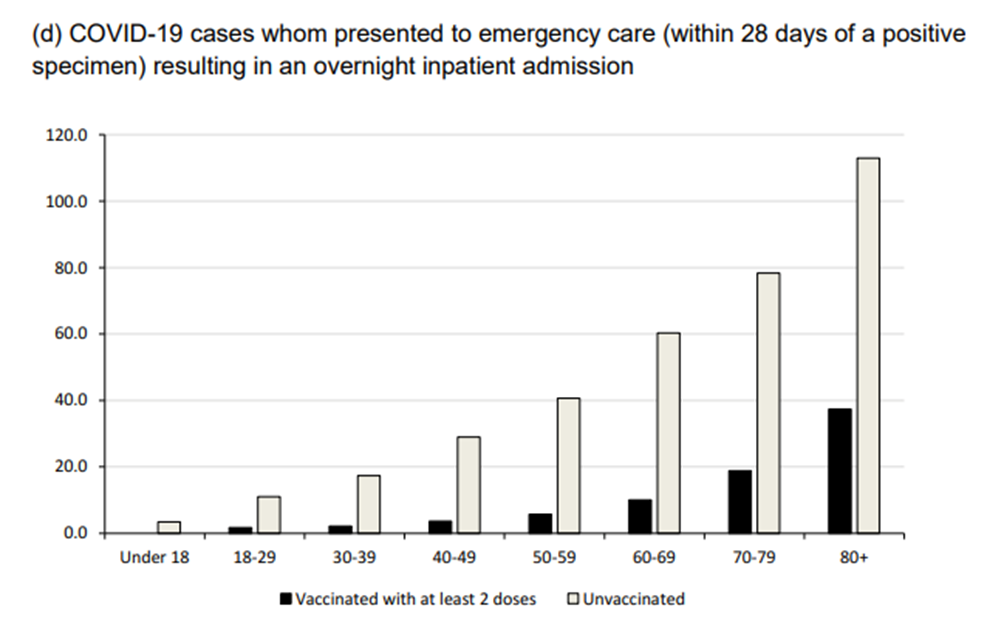
The other aspect of the data not entirely clear from those charts is the significant reduction in risk seen with time. The UKHSA data suggest that the risk of hospitalisation and death saw a 10-fold fall in the seven months between September 2021 and March 2022. The claimed effectiveness of the vaccines at protecting against these serious outcomes must be interpreted with these lower absolute risks in mind. Is a vaccine with a 50% effectiveness at protecting against hospitalisation and death offering much real-world value if the risk of hospitalisation and death faced by an unvaccinated individual is relatively low compared with day-to-day risks?
Even if the vaccines once offered protection against hospitalisation and death, is it still the case? Since August 2022 the Vaccine Surveillance Reports have been including real-world data on hospitalisations from the UKHSA's Severe Acute Respiratory Infection (SARI) Watch system. In November's report these data suggest the following hospitalisation figures for the subset of hospitals included in the SARI-Watch data:

The section covering the SARI-Watch data also includes charts for the proportion of hospital admissions by the period of time since each admitted individual's last dose of vaccine. The most recent chart is shown below.
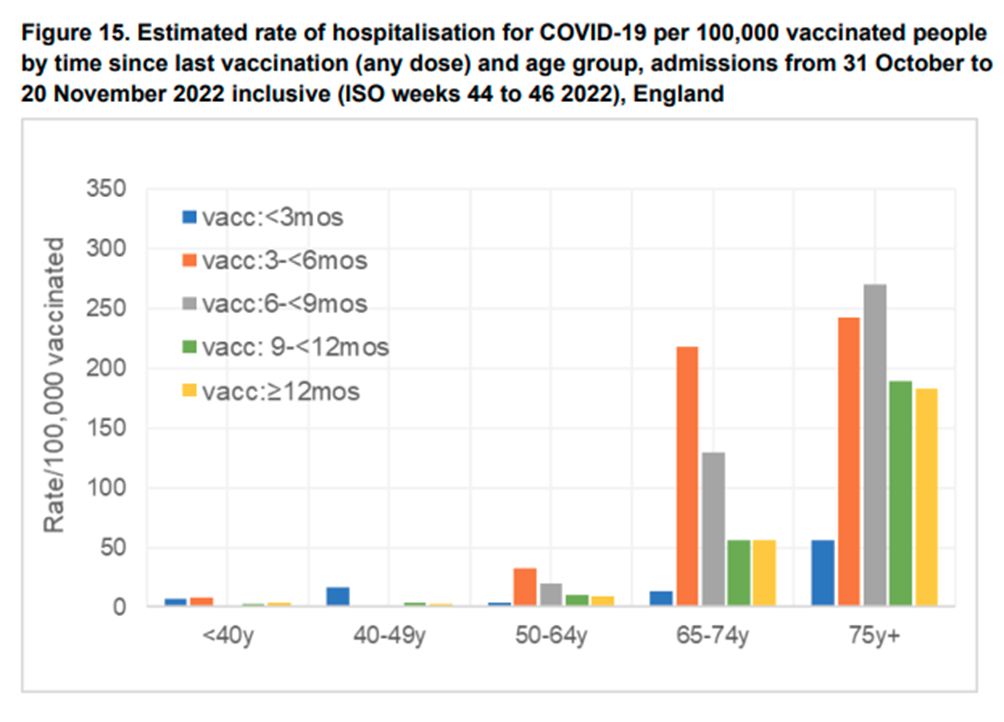
Given this apparent lack of effectiveness of the Covid vaccines in reducing hospitalisations, it is odd that official guidance is still for the vast majority of those in the UK (all aged over 5, and soon to be all aged over 6 months) to receive a full course of a Covid vaccine. Are the U.K. experts responsible for advising Government paying any attention whatsoever to these real-world data?
Looking back from where we have ended up, it should be fair to ask whether there was ever any benefit in vaccinating those at low risk from Covid. Even given the uncertainties surrounding the Covid vaccines in early 2021, would we have gained nearly all of the supposed benefits by vaccinating only those most vulnerable? If we had taken this approach then the potential risks of the vaccines wouldn't have affected the majority of the population. Indeed, if we are indeed seeing negative vaccine effectiveness, then we will likely be having much larger Covid waves that could well be resulting in more hospitalisations and deaths in the vulnerable, compared with if we'd vaccinated only those individuals actually at risk from Covid.
That brings us to the end of this series of posts reviewing the UKHSA's Vaccine Surveillance Report - a document released by Government when we needed it most, but which delivered as little as it could beyond the propaganda value. That said, perhaps we should be grateful that statisticians and epidemiologists in the UKHSA persisted with presenting data that clearly showed the deterioration in the protection offered by the vaccines, even if the text that was written was so very keen to divert attention from the data elephant in the room.
I hope you've enjoyed reading the instalments over the weeks. Oh, and do enjoy your Christmas break, no matter the attempts of our Government to spoil it.
Amanuensis is an ex-academic and senior Government scientist. He blogs at Bartram's Folly - subscribe here.
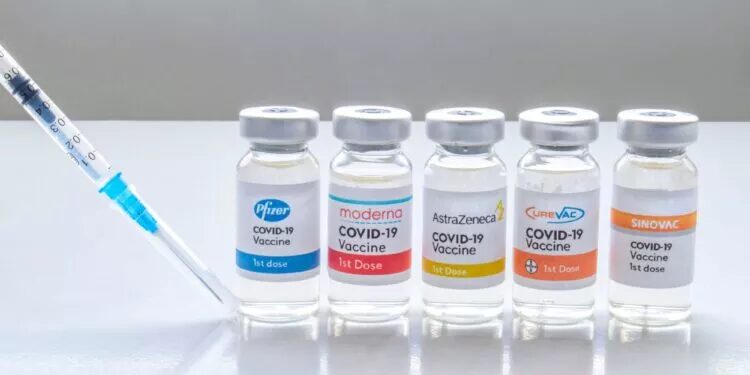
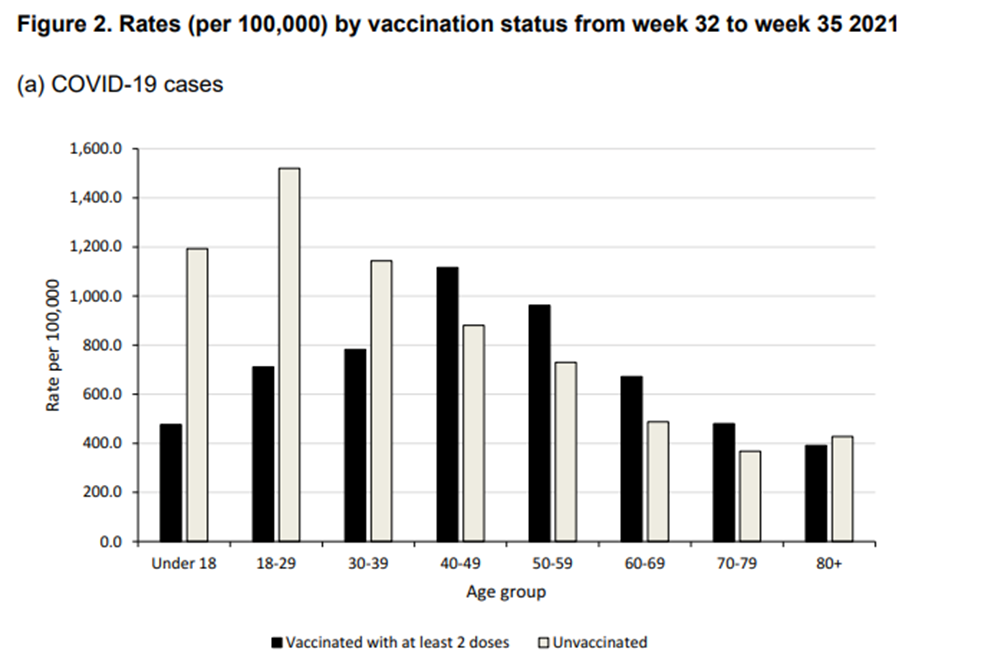
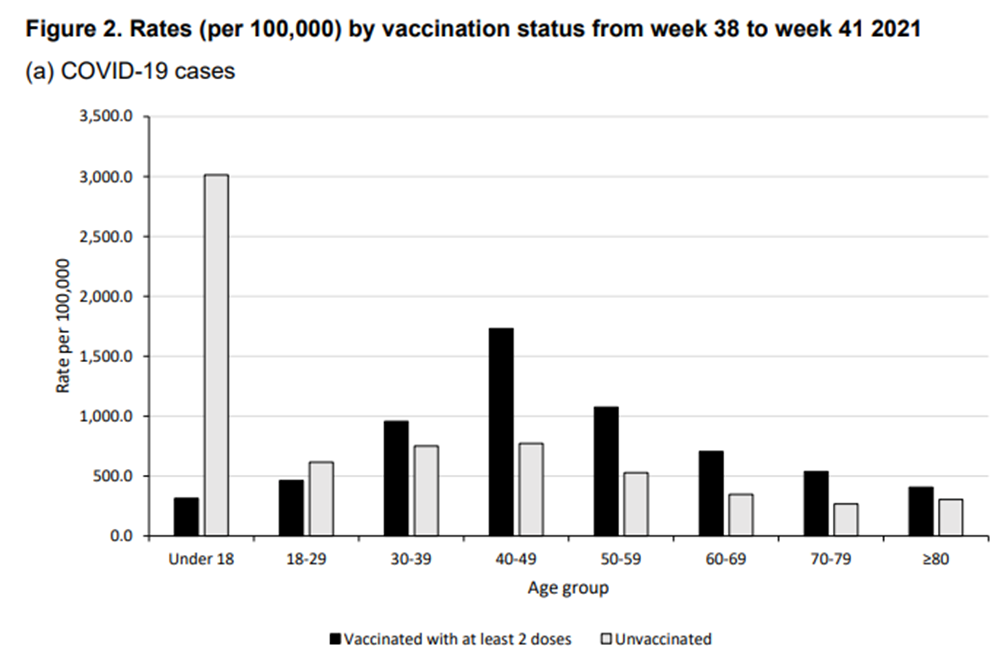
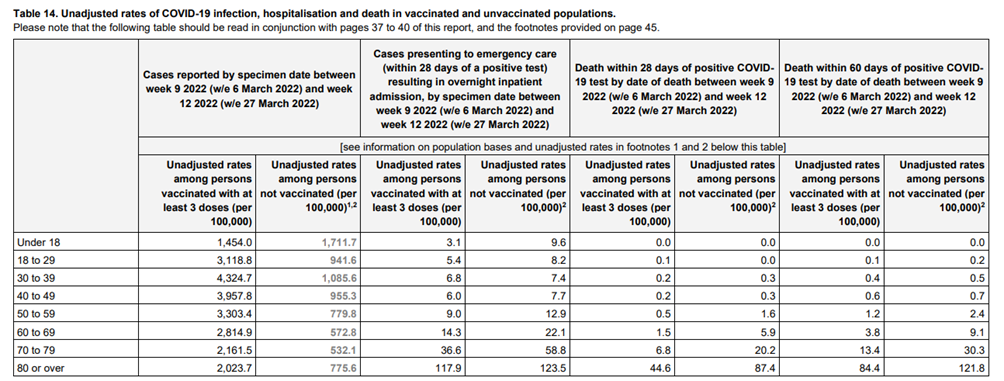
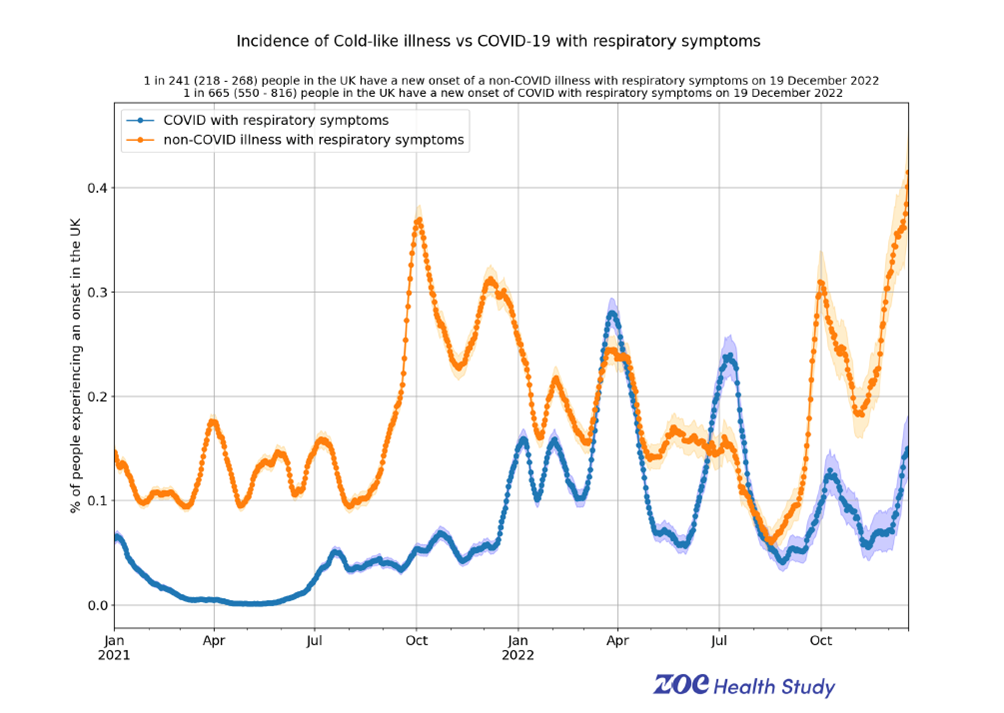
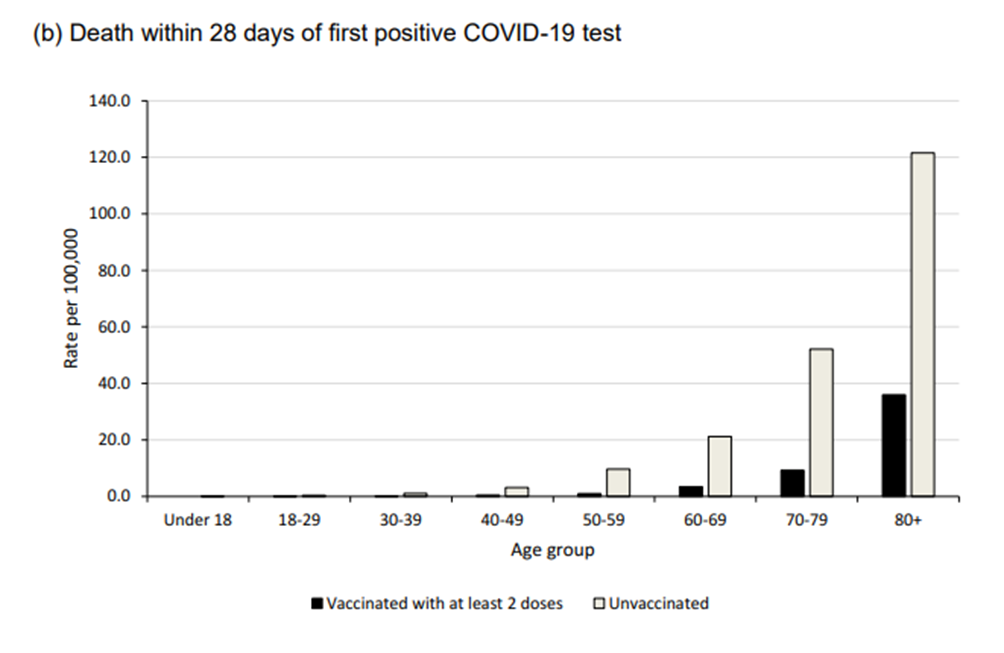



Comment: At this point it is clear that the COVID vaccines posed far more risks than any purported benefit, and were never intended to prevent transmission of infection. See also: